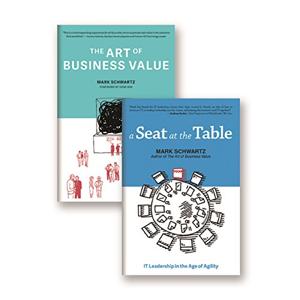
Want to learn the ideas in A Seat at the Table better than ever? Read the world’s #1 book summary of A Seat at the Table by Mark Schwartz here.
Read a brief 1-Page Summary or watch video summaries curated by our expert team. Note: this book guide is not affiliated with or endorsed by the publisher or author, and we always encourage you to purchase and read the full book.
Video Summaries of A Seat at the Table
We’ve scoured the Internet for the very best videos on A Seat at the Table, from high-quality videos summaries to interviews or commentary by Mark Schwartz.
1-Page Summary of A Seat at the Table
To Customers, Value Counts
Many executives have a low opinion of salespeople. They may see them as people who are just out to make money and don’t care about strategic goals or adding value. To break this mold, become intrinsic to your customers’ strategic success so they see you not as a salesperson but as someone who adds value to their firm.
To make customers feel welcome, you have to understand their needs and align them with your company’s goals. You also need to offer solutions that will help your clients be more productive and differentiate themselves from the competition. This requires understanding customer strategies so that you can match products and services with those strategies. To do this, you must become familiar with a client’s business strategy rather than just talking about the features of your own company’s products or services. Doing so will allow you to achieve several benefits:
When people view your product as a vital solution, they will not let their procurement teams focus on price. Therefore, you can maintain sales of your basic line.
As a trusted counselor, you can talk to senior executives at every level.
When you fully understand a customer’s strategy and can enhance it, you will be able to create demand for your products. You’ll also be able to sell innovative solutions that are based on the current market trends as well as nurture steady demand for your “commodity” products.
Selling is becoming obsolete. A Wal-Mart study found that salespeople weren’t helping the company, so they got rid of half their procurement staff and started buying products online. Procter & Gamble (P&G) successfully adapted to this new policy by brainstorming with Wal-Mart executives about how it could help the company reach its goals. Tom Muccio, P&G vice president of sales, worked hard to understand Wal-Mart’s strategy and realized that price wasn’t what motivated its executives most. He explains: “The cheapest price wasn’t where Wal-Mart saw the most value in my business.”
Stop Selling, Start Helping
To gain a seat at the table, focus on connecting with senior executives (the decision makers) and providing them with meaningful support. Don’t worry about influencing their purchasing decisions. Concentrate on having a positive impact on their operations. Create a value proposition that is connected to as many of their strategic priorities as possible. This may be a novel mind-set for many salespeople, but executives will welcome you enthusiastically if you can show them how to boost their ability to carry out their strategies. To learn if you are really helping your clients, conduct an assessment by e-mailing customers, colleagues, sales managers and senior executives to ask them to assess your pluses and minuses honestly.
Will the Customer “Hire” Your Product or Service?
Businesses that buy products and services are essentially hiring those solutions to solve problems. Some solutions are traditional, like products and services, while others involve major changes. Those who sell new solutions must tailor their selling methods to the client’s needs by having moneymaking conversations with them.
The “Master Strategic Plan Matrix”
You should use your knowledge of the client and high-quality research to create a matrix that will help you understand their strategic planning. There are two types of strategies: red ocean strategies, which focus on traditional products that provide stability more than they do growth; and blue ocean strategies, which are all about new ideas and offer the most growth and differentiation.





